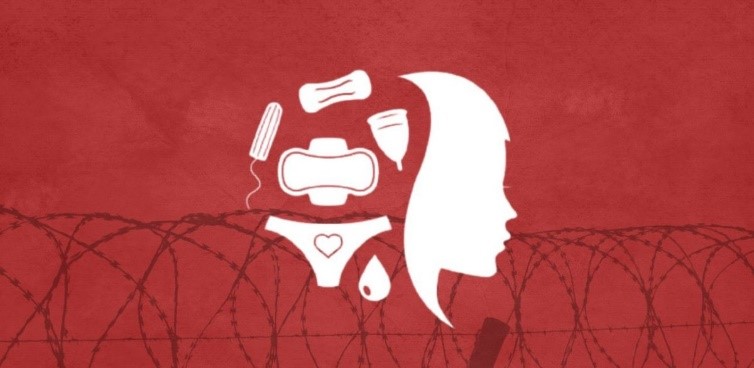Description

Disclaimer: Copyright infringement not intended.
Context
- The fifth round of the National Family Health Survey (NFHS 2019-2020) revealed that about eight out of 10 young women aged 15-24 years are now using safe menstrual hygiene products.
Findings from the National Family Health Survey (NFHS 2019-2020)
- Increased Usage: About eight out of 10 young women aged 15-24 years are using safe menstrual hygiene products.
- Urban and Demographic Improvements: Significant improvements in menstrual hygiene product usage in urban areas and among certain demographics.
Marginalized Population: Women in Indian Prisons
- Neglected Group: Despite overall improvements, women in Indian prisons remain a severely marginalized group with their menstrual hygiene needs often overlooked.
- Systemic Oversight: There is a lack of attention to the basic needs of female prisoners, including menstrual hygiene management.
Societal Attitudes and Biases
- Fundamental Rights: Prisoners are often deemed unworthy of fundamental rights, exacerbating the neglect of female prisoners.
- Female Purity Standard: Society clings to an unrealistic standard of female purity, struggling to accept that women can commit crimes.
- Gender Bias: This bias contributes to systemic neglect and oversight of female prisoners’ basic needs, including their menstrual hygiene.
Status of Menstrual Hygiene in Prisons
Population Overview
- According to the National Crime Records Bureau, there are 23,772 women in Indian prisons.
- 77% of these women are in the reproductive age group (18-50 years) and are likely regular menstruators.
Availability and Quality of Sanitary Napkins
- The availability of sanitary napkins has been inconsistent across different prisons.
- The quality of sanitary napkins provided is often unsatisfactory.
- Many states have not implemented the recommendations from the 2016 Model Prison Manual, which include the provision of adequate sanitary napkins.
Water and Washroom Facilities
- Many prisons lack adequate water and washroom facilities for female prisoners.
- Overcrowding exacerbates the struggle for basic necessities like water, sanitary napkins, detergent, and soap.
- Prisons often force about 50 women to share just two toilets, used for all daily activities, including menstrual hygiene management.
- Poor water supply means women have to store water, further reducing the usable space in washrooms.
- Inadequate washroom cleanliness discourages frequent use, leading to higher instances of urinary infections.
Study Findings from Maharashtra Prison
- A study conducted by Himani Gupta in June 2023 in a Maharashtra prison highlighted significant issues with water, sanitation, and hygiene facilities.
- Facilities did not meet the demands of the women imprisoned there, particularly during menstruation.
- Continuous water supply was lacking, making it difficult for women to maintain personal hygiene.
- Women were discouraged from using filthy washrooms frequently, resulting in a higher incidence of urinary infections.
Reliance on Donations
- Prison authorities often rely on sanitary napkins donated by non-governmental organizations.
- The quality and quantity of menstrual absorbents were determined by these organizations, often resulting in substandard products.
- Insufficient quantity and poor quality of sanitary napkins (subpar absorption, discomfort, skin rashes, and infections) were reported.
- In some cases, prisons received 'reusable' sanitary napkins, but the lack of adequate water and detergent made it impractical for women to wash them after each use.

Policy Interventions
Menstrual Hygiene Scheme
- Objective: Improve access to menstrual hygiene products, especially for young women.
- Implementation: Distribution of free or subsidized sanitary napkins.
Suraksha Suvidha Napkins
- Objective: Make sanitary napkins more affordable for underprivileged women.
- Availability: Sold at Jan Aushadhi Kendras for ₹1 per napkin.
National Menstrual Hygiene Policy (2023)
- Purpose: Recognize menstruation as a natural process needing significant attention.
- Principle: Ensure equity in the safe and dignified management of menstrual hygiene.
- Equity Focus: Enable all menstruating individuals, regardless of socioeconomic status or geographical location, to access and manage their menstruation safely and hygienically.
- Addressing Disparities: Target disparities and barriers preventing access to menstrual hygiene products, resources, and information.
Inclusion of Prisoners
- Target Population: Identifies prisoners as a group with compromised access to menstrual hygiene facilities.
- Positive Step: Recognizing the specific needs of incarcerated women.
- Shortcomings:
- Lack of Action Plan: No concrete strategy to improve menstrual hygiene management in prisons.
- Ministry of Home Affairs: Overlooks the role of this critical stakeholder in influencing prison hygiene policies.
What Needs to Be Done?
Ensure Adherence to Model Prison Manual 2016
- Standardization: Ensure that all States comply with the recommendations of the Model Prison Manual 2016.
- Implementation Monitoring: Regularly monitor and evaluate the implementation of these standards across different prisons.
Address Menstrual Hygiene as a Public Health Issue
- Public Health Lens: Recognize and address the unique challenges of menstruation in prisons as a significant public health issue.
- Fight Against Period Poverty: Integrate menstrual hygiene management as a crucial aspect of combating period poverty in prisons.
Develop a Comprehensive Strategy
- Collaboration: Encourage collaboration between public health authorities and prison administrators.
- Comprehensive Plan: Formulate a strategy to ensure access to adequate menstrual hygiene products and facilities.
- Product Availability: Ensure the consistent supply of high-quality menstrual hygiene products.
- Facility Improvement: Upgrade washroom and sanitation facilities to meet the needs of menstruating women.
- Health and Dignity: Prioritize the health and dignity of incarcerated women in all hygiene initiatives.
Conduct Empirical Research
- Current State Assessment: Undertake research to assess the current state of menstrual hygiene within prisons.
- Data Collection: Gather empirical evidence to identify gaps and areas needing improvement.
- Informed Policy Making: Use research findings to inform and refine policies and practices related to menstrual hygiene in prisons.
Conclusion
- To ensure menstrual hygiene standards are met in Indian prisons, the government must enforce existing guidelines, address menstruation as a public health issue, develop comprehensive strategies in collaboration with health authorities, and conduct empirical research.
- These steps are essential to uphold the health and dignity of incarcerated women and effectively combat period poverty within prison walls.
|
PRACTICE QUESTION
Q. Examine the current status of menstrual hygiene management in Indian prisons, highlighting the challenges faced by incarcerated women. Discuss the policy interventions in place and suggest measures to ensure adequate menstrual hygiene facilities and products for women prisoners.
|












